 |
King of Chemicals Manufacturers |
Specifications, Properties, Uses, SDS of Maltodextrin USP NF IP BP EP Ph Eur FCC Food Grade Manufacturer Supplier Exporter Wholesale & Small Packs, CAS Number 9050-36-6. |
|
| King of Chemicals has several associated companies having accreditations like cGMP, GLP - FDA Approved Good Manufacturing Practice and Good Laboratory Practice of WHO standard, ISO-9001, ISO-14001, ISO/IEC 17025, ISO ISO-45000, HACCP, FSSC 220000, FSSAI, "REACH" Registered, Kosher & Halal Certified. e-CTD and DMF support can be made available if needed. We offer USP NF BP Ph Eur EP IP JP Analytical Reagent FCC Food Grade Chemicals & Nutraceuticals. | |
        |
|
Muby Chem Pvt. Ltd. is a several decades old group of companies, engaged in manufacturing, supplying, distributing, wholesale supplies of Maltodextrin USP NF IP BP EP Ph Eur FCC Food Grade for actual users, including retail or small pack supplies for research and development work.
We supply fine and speciality chemicals, pharmaceutical excipients, mineral fortifiers in chemically pure, analytical reagent grade, IP BP USP Ph Eur EP JP and other pharmaceutical grade monograph including FCC Food grade chemicals and Nutraceuticals at best prices. We and/or our associated units have all the facilities to supply as per cGMP standard observing good manufacturing practice and good laboratory practice. We can assure low microbial count and also offer a test certificate for the same. We maintain warehouses across USA, India, and UAE. Our group exports to USA, Canada, Mexico, Argentina, Brazil, Chile, Korea, Malaysia, Thailand, Indonesia, Europe, and several other parts of the world. We supply in wholesale container loads to small pack of few grams. Solid products may be specified for it size and shape as desired by the buyer.
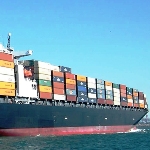

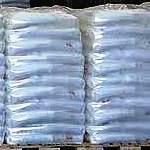
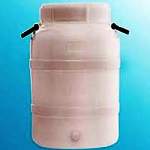
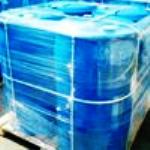
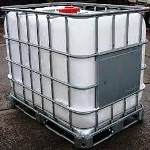
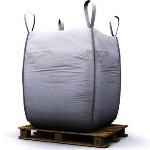
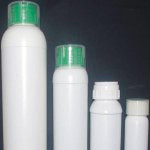
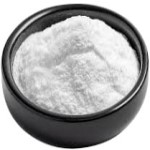
Maltodextrin CAS Number 9050-36-6
For Properties Specifications Uses of Maltodextrin Click Properties, Specifications, Uses, Price, Process of Maltodextrin Manufacturer.
For For SDS MSDS Sheet of Maltodextrin Click SDS Safety Data Sheet MSDS Sheet of Maltodextrin Manufacturer.
The Properties, Specifications, Monograph and Uses of Maltodextrin:
Maltodextrin is a polysaccharide (many carbohydrates joined together in a molecular chain) that is used as a food additive.
Speicifcations of Maltodextrin USP NF Grade Specifications:
DEFINITION
Maltodextrin is a non-sweet, nutritive saccharide mixture of polymers that consists of d-glucose units, with a Dextrose Equivalent less than 20. It is prepared by the partial hydrolysis of a food grade starch with suitable acids and/or enzymes. It may be physically modified to improve its physical and functional characteristics.
ASSAY: Dextrose Equivalent to pass the test.
Acceptance criteria: Less than 20
[Note: This is a limit test. For Maltodextrins with lower reducing values, other procedures may give other results.]
Residue on Ignition: NMT 0.5%
Limit of Protein: To pass the test.
Acceptance criteria: NMT 0.1%
Limit of Sulfur Dioxide: To pass the test.
Acceptance criteria: NMT 40 µg/g (ppm)
Microbial Enumeration Tests and Tests for Specified Microorganisms: It meets the requirements of the tests for absence of Salmonella species and Escherichia coli.
pH: 4.0 to 7.0, in a 0.2-g/mL solution in carbon dioxide-free water.
Loss on Drying: Dry a sample at 105C for 2 h in a forced-air oven: it loses NMT 6.0% of its weight.
Packaging and Storage: Preserve in tight containers, or in well-closed containers, at a temperature not exceeding 30C and a relative humidity not exceeding 50%.
Specifications of Maltodextrin BP Ph Eur Grade:
Action and use: Excipient.
DEFINITION
Mixture of glucose, disaccharides and polysaccharides, obtained by the partial hydrolysis of starch. The degree of hydrolysis, expressed as dextrose equivalent (DE), is less than 20 (nominal value).
CHARACTERS
Appearance: White or almost white, slightly hygroscopic powder or granules.
Solubility: Freely soluble in water.
IDENTIFICATION
A. Dissolve 0.1 g in 2.5 mL of water and heat with 2.5 mL of cupri-tartaric solution. A red precipitate is formed.
B. Dip, for 1 s, a suitable stick with a reactive pad containing glucose-oxidase, peroxidase and a hydrogen-donating substance, such as tetramethylbenzidine, in a 100 g/L solution of the substance to be examined. Observe the colour of the reactive pad; within 60 s a colour change is observed, characteristic of the hydrogen-donating substance used (from yellow to green or blue if tetramethylbenzidine is used).
C. It is a powder or granules.
D. Dextrose equivalent (see Tests).
TESTS
Solution S: Dissolve 12.5 g in carbon dioxide-free water and dilute to 50.0 mL with the same solvent.
pH: 4.0 to 7.0.
Mix 1 mL of a 223.6 g/L solution of potassium chloride and 30 mL of solution S.
Sulfur dioxide: Maximum 20 ppm.
Loss on drying: Maximum 6.0 per cent, determined on 10.00 g by drying in an oven at 105C.
Sulfated ash: Maximum 0.5 per cent, determined on 1.0 g.
The label states the dextrose equivalent (DE) (= nominal value).
Maltodextrin is also available as per IP EP grade monograph.
Specifications of Maltodextrin FCC Food Grade:
CAS 9050-36-6
DESCRIPTION
Maltodextrin occurs as a white, slightly hygroscopic powder, as granules of similar description, or as a clear to hazy solution in water. It is a purified, concentrated, nutritive mixture of saccharide polymers obtained by the partial hydrolysis of edible starch. Powders or granules are freely soluble or readily dispersible in water.
Function: Anticaking and free-flowing agent; bulking agent; stabilizer and thickener; surface-finishing agent.
REQUIREMENTS
Identification: Add a few drops of a 1:10 aqueous solution to 5 mL of hot alkaline cupric tartrate. A red precipitate of cuprous oxide forms.
Assay: Less than 20.0% reducing sugar content (dextrose equivalent) expressed as D-glucose.
Lead: Not more than 0.5 mg/kg.
Protein: (Total) Not more than 0.5%, except not more than 1.0% in Maltodextrins produced from high-amylose starches.
Residue on Ignition: Not more than 0.5%.
Sulfur Dioxide: Not more than 0.0025%.
Total Solids:
Powders and Granules: Not less than 90.0%;
Liquids: Not less than 50.0%.
The MSDS-SDS Hazard Statement of Maltodextrin:
Maltodextrin SDS, Safety Data Sheet
MSDS Sheet, Material Safety Data Sheet 01-April-25
Section 1: Chemical Product and Company Identification
Product Name & Other Names: Maltodextrin.
CAS Number: 9050-36-6
EINECS EC Code: 232-940-4
Relevant uses and uses advised against (if any): Industrial Manufacturing.
Section 2: Hazards Identification
GHS, Globally Harmonized System Classification in accordance with 29 CFR 1910
Hazard Class and Category Code(s), Regulation (EC) No 1272/2008 (CLP)
Not a hazardous substance or mixture according to Regulation (EC) No. 1272/2008.
This substance is not classified as dangerous according to Directive 67/548/EEC.
Labeling Regulation EC 1272/2008 (CLP) & GHS
GHS Label Elements NONE |
Signal Word: None
Precautionary statements:
P261: Avoid breathing dust/fume/gas/mist/vapors/spray.
P262: Do not get in eyes, on skin, or on clothing.
P281: Use personal protective equipment as required.
P302+P352: IF ON SKIN: Wash with plenty of soap and water.
P304+P340: IF INHALED: Remove victim to fresh air and keep at rest in a position comfortable for breathing.
P305+P351+P338: IF IN EYES: Rinse cautiously with water for several minutes. Remove contact lenses, if present and easy to do. Continue rinsing.
P337+313: If eye irritation persists get medical advice/attention.
Section 3: Composition and Information on Ingredients
Product Name & Other Names: Maltodextrin.
CAS Number: 9050-36-6
EINECS EC Code: 232-940-4
Section 4: First Aid Measures
Always seek medical advice after the first aid treatment.
Skin: Rinse with water. Soap may be used. Seek Medical Aid.
Eyes: Wash eyes with plenty of water for at least 15 minutes, lifting lids occasionally. Seek Medical Aid.
Inhalation: Remove to fresh air. If not breathing, give artificial respiration. If breathing is difficult, give oxygen.
Ingestion: If swallowed, induce vomiting immediately after giving two glasses of water. Never give anything by mouth to an unconscious person.
Section 5: Fire and Explosion Data
Flammability of the Product: Non-flammable.
Products of Combustion: Oxides of Carbon.
Fire Fighting Media and Instructions: Use water spray, alcohol-resistant foam, dry chemical or carbon dioxide. Wear self-contained breathing apparatus for firefighting if necessary. Avoid solid water jet as it can scatter the fire.
Special Information: In the event of a fire, wear full protective clothing and NIOSH-approved self-contained breathing apparatus with full face piece operated in the pressure demand or other positive pressure mode. At high temperatures under fire conditions, it may produce toxic or irritating fumes.
Section 6: Accidental Release Measures
Personal precautions, protective equipment and emergency procedures: Avoid breathing dust/fumes/gas/mist/vapors/spray. Ensure adequate ventilation. Use individual protective equipment (waterproof boots, suitable protective clothing, safety glasses, etc.).
Environmental precautions: Do not let the product enter drains, soil or water sources.
Methods and materials used for containment Cleanup procedures and Storage: Contain spilled material. Cover with an inert, non-combustible absorbent material, (e.g. sand, earth, diatomaceous earth, vermiculite). Vacuum or sweep-up and remove to an approved disposal container. Do not inhale vapors, mist, or gas. Avoid dust formation.
Section 7: Handling and Storage
Precautions for safe handling: Apply according to good manufacturing and industrial hygiene practices. Ensure proper ventilation. Wash thoroughly after handling. Do not drink, eat or smoke while handling. Avoid contact with skin, eyes and clothing. Minimize dust generation. Avoid breathing dust/fumes/gas/mist/vapors/spray. Keep container tightly closed. Avoid ingestion and inhalation. Use individual protective equipment (waterproof boots, suitable protective clothing, safety glasses, etc.).
Conditions for safe storage, including any incompatibilities: Store in cool, dry and ventilated area away from heat sources and protected from sunlight in tightly closed original container. Keep air contact to a minimum. Do not leave the material container open. Store protected from heat, sparks and ignition sources and incompatible materials. Avoid inhalation of dust/mist/vapor. Do not store with incompatible materials like oxidizing agents.
Section 8: Exposure Controls/Personal Protection
Engineering Controls: Use process enclosures, local exhaust ventilation, or other engineering controls to keep airborne levels low.
Exposure Limits: This product does not contain any hazardous materials with occupational exposure limits established by the region-specific regulatory bodies.
Ventilation System: A system of local and/or general exhaust is recommended to keep employee exposures low.
Personal Respirators (NIOSH Approved): For conditions of use where exposure to dust or mist is apparent and engineering controls are not feasible, a particulate respirator may be worn.
Skin Protection: Wear protective gloves and clean body-covering clothing.
Eye Protection: Use chemical safety goggles and/or full face shield where dusting or splashing of solutions is possible. Maintain eye wash fountain and quick-drench facilities in work area.
Other Control Measures: Maintain good housekeeping in work area. Handle in accordance with good industrial hygiene and safety practice.
Section 9: Physical and Chemical Properties
Physical state and appearance: White or almost white, slightly hygroscopic powder or granules.
Odor: Odorless.
Odor threshold: Not applicable.
pH (5% soln/water): 4 to 7
Relative density: No information found.
Melting point/freezing point: No information found.
Initial boiling point and boiling range: No information found.
Flash point: No information found.
Auto-ignition temperature: No information found.
Decomposition temperature: No information found.
Upper/lower flammability or explosive limits: No information found.
Vapor pressure: No information found.
Vapor density: No information found.
Evaporation rate: No information found.
Flammability (solid, gas): No information found.
Partition coefficient: n-octanol/water: No information found.
Solubility: Freely soluble in water.
Viscosity: No information found.
Section 10: Stability and Reactivity Data
Stability: It is stable in room temperature in closed containers under normal storage & handling.
Conditions of instability: Incompatible materials, Moisture
Incompatibility with various substances: Avoid high temperatures, sparks, open flames and moisture. Avoid contact with strong oxidizing agents.
Polymerization: Will not occur.
Section 11: Toxicological Information
LD50 Oral - Rat: No information found.
Carcinogenic Effects: No component of this product present at levels greater than or equal to 0.1% is identified as probable, possible or confirmed human carcinogen by IARC, NTP, ACGIH, OSHA.
Mutagenic Effects: No information found.
Developmental Toxicity: No information found.
Reproductive Effects: No information found.
Section 12: Ecological Information
Toxicity to fish: No information found.
Products of Biodegradation: The product itself and its products of degradation are not toxic.
Persistence and Degradability: It is degradable.
Mobility: Likely to be mobile.
Bioaccumulation/ Accumulation: Unlikely to accumulate.
Results of PBT and vPvB assessment: No information found.
Section 13: Disposal Considerations
Waste Disposal: Waste must be disposed of in accordance with federal, state and local environmental control regulations.
Section 14: Transport Information
Land Transport DOT USA, TDG Canada & ADR/RID Europe: Not controlled.
Sea Transport IMDG/IMO: Not controlled.
Air Transport IATA/ICAO: Not controlled.
Section 15: Other Regulatory Information
USA:
SARA 311/312 Hazards: No SARA hazards.
California Prop. 65 Components: Not listed.
DISCLAIMER: The information and recommendations set forth herein are presented in good faith and believed correct as of the date hereof. It is compiled from various sources, and it is not necessarily all inclusive nor fully adequate in every circumstance. In addition, these suggestions should not be confused with nor followed in violation of applicable laws, regulations, rules, or insurance requirements applicable. This SDS MSDS sheet is intended only as a guide to the appropriate precautionary handling of the material by a professionally trained person using this product. Individuals receiving the information must exercise their independent judgment in determining its appropriateness for a particular purpose. This shall not constitute a guarantee for any specific product features and shall not establish a legally valid contractual relationship. In no case shall our company be liable to loss or damages by the product user.

Maltodextrin Manufacturers, Suppliers, Exporters, Wholesalers:
King of Chemicals manufacturers

Plot No. 2900/46&47 + 2900/163to167, GIDC, Ankleshwar, Dist. Bharuch, India
India, USA, UAE
TEL: (Office) 91-22-23774610, 91-22-23723564
e-mail: info@kingofchemicals.com
Copyright and Usual Disclaimer is Applicable --- April 9, 2025
If I give you “My Word” Nobody can undo it.
If I sign an “Agreement” my Lawyer will undo it
Our products are for industrial and laboratory use only. The user must test the material before use. We are not dispensing chemists or druggist and do not offer over the counter type (OTC) products for medical use by individuals.
We and our associates manufacture pure chemicals surpassing Monograph Specifications of Analytical Reagent Standards, British & European Pharmacopoeia BP Ph Eur EP Standard, US Pharmacopoeia USP NF Standard, Indian Pharmacopoeia IP Standard, Japan Pharmacopoeia JP Standard, FCC Food Grade Standard. |
|